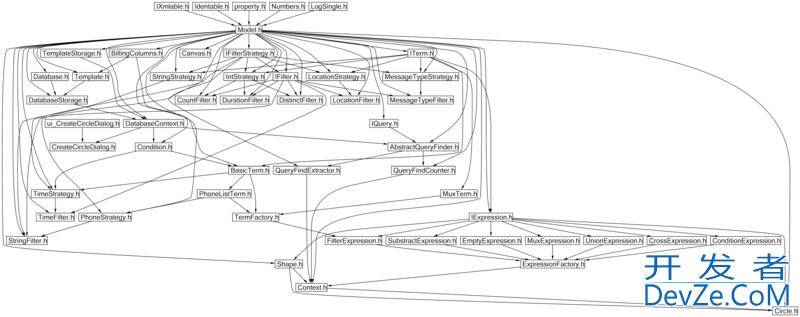I want to implement a background averaging method. I have 50 frames of images taken in one second and some of the frames contain lightning which I want to extract as the foreground. The frames are taken with a stationary camera and 开发者_StackOverflowthe frames are taken as grayscales. What I want to do is:
- Get the background model
- After, compare each frame to the background model to determine whether there is lighting in that frame or not.
I read some documents on how this can possible be done by using cvAcc() but am having a difficulty understanding how this can be done. I would appreciate a piece of code which guide me and links to documents that can help me understand how I can implement this.
Thanking you in advance.
We had the same task in one of our projects.
To get the background model, we simply create a class BackgroundModel, capture the first (lets say) 50 frames and calculate the average frame to avoid pixel errors in the background model.
For example, if you get an 8-bit greyscale image (CV_8UC1) from your camera, you initialize your model with CV_16UC1 to avoid clipping.
cv::Mat model = cv::Mat(HEIGHT, WIDTH, CV_16UC1, cv::Scalar(0));
Now, waiting for the first frames to calculate your model, just add every frame to the model and count the amount of received frames.
void addFrame(cv::Mat frame) {
cv::Mat convertedFrame;
frame.convertTo(convertedFrame, CV_16UC1);
cv::add(convertedFrame, model, model);
if (++learnedFrames >= FRAMES_TO_LEAN) { // FRAMES_TO_LEARN = 50
createMask();
}
}
The createMask() function calculates the average frame which we use for the model.
void createMask() {
cv::convertScaleAbs(model, mask, 1.0 / learnedFrames);
mask.convertTo(mask, CV_8UC1);
}
Now, you just send all the frames the way through the BackgroundModel class to a function subtract(). If the result is an empty cv::Mat, the mask is still calculated. Otherwise, you get a subtracted frame.
cv::Mat subtract(cv::Mat frame) {
cv::Mat result;
if (++learnedFrames >= FRAMES_TO_LEAN) { // FRAMES_TO_LEARN = 50
cv::subtract(frame, mask, result);
}
else {
addFrame(frame);
}
return result;
}
Last but not least, you can use Scalar sum(const Mat& mtx) to calculate the pixel sum and decide if it's a frame with lights on it.
MyPolygon function mask the ROI and after that, it calculates the abs Pixel difference and calculates the number of white pixels.
srcImage : Reference image.
#include <opencv2/opencv.hpp>
#include <iostream>
#include <random>
using namespace std;
using namespace cv;
cv::Mat MyPolygon( Mat img )
{
int lineType = 8;
// [(892, 145), (965, 150), (933, 199), (935, 238), (970, 248), (1219, 715), (836, 709), (864, 204)]
/** Create some points */
Point rook_points[1][8];
rook_points[0][0] = Point(892, 145);
rook_points[0][1] = Point(965, 150);
rook_points[0][2] = Point(933, 199);
rook_points[0][3] = Point(935, 238);
rook_points[0][4] = Point(970, 248);
rook_points[0][5] = Point(1219, 715);
rook_points[0][6] = Point(836, 709);
rook_points[0][7] = Point(864, 204);
const Point* ppt[1] = { rook_points[0] };
int npt[] = { 8 };
cv::Mat mask = cv::Mat::zeros(img.size(), img.type());
fillPoly( mask,
ppt,
npt,
1,
Scalar( 255, 0, 0 ),
lineType
);
cv::bitwise_and(mask,img, img);
return img;
}
int main() {
/* code */
cv::Mat srcImage = cv::imread("/home/gourav/Pictures/L1 Image.png", cv::IMREAD_GRAYSCALE);
resize(srcImage, srcImage, Size(1280, 720));
// cout << " Width : " << srcImage.cols << endl;
// cout << " Height: " << srcImage.rows << endl;
if (srcImage.empty()){
std::cerr<<"Ref Image not found\n";
return 1;
}
cv::Mat img = MyPolygon(srcImage);
Mat grayBlur;
GaussianBlur(srcImage, grayBlur, Size(5, 5), 0);
VideoCapture cap("/home/gourav/GenralCode/LD3LF1_stream1.mp4");
Mat frames;
if(!cap.isOpened()){
std::cout << "Error opening video stream or file" << endl;
return -1;
}
while (1)
{
cap >> frames;
if (frames.empty())
break;
// Convert current frame to grayscale
cvtColor(frames, frames, COLOR_BGR2GRAY);
// cout << "Frame Width : " << frames.cols << endl;
// cout << "Frame Height: " << frames.rows << endl;
Mat imageBlure;
GaussianBlur(frames, imageBlure, Size(5, 5), 0);
cv::Mat frame = MyPolygon(imageBlure);
Mat dframe;
absdiff(frame, grayBlur, dframe);
// imshow("grayBlur", grayBlur);
// Threshold to binarize
threshold(dframe, dframe, 30, 255, THRESH_BINARY);
//White Pixels
int number = cv::countNonZero(dframe);
cout<<"Count: "<< number <<"\n";
if (number > 3000)
{
cout<<"generate Alert ";
}
// Display Image
imshow("dframe", dframe);
char c=(char)waitKey(25);
if (c==27)
break;
}
cap.release();
return 0;
}




![Interactive visualization of a graph in python [closed]](https://www.devze.com/res/2023/04-10/09/92d32fe8c0d22fb96bd6f6e8b7d1f457.gif)



 加载中,请稍侯......
加载中,请稍侯......
精彩评论